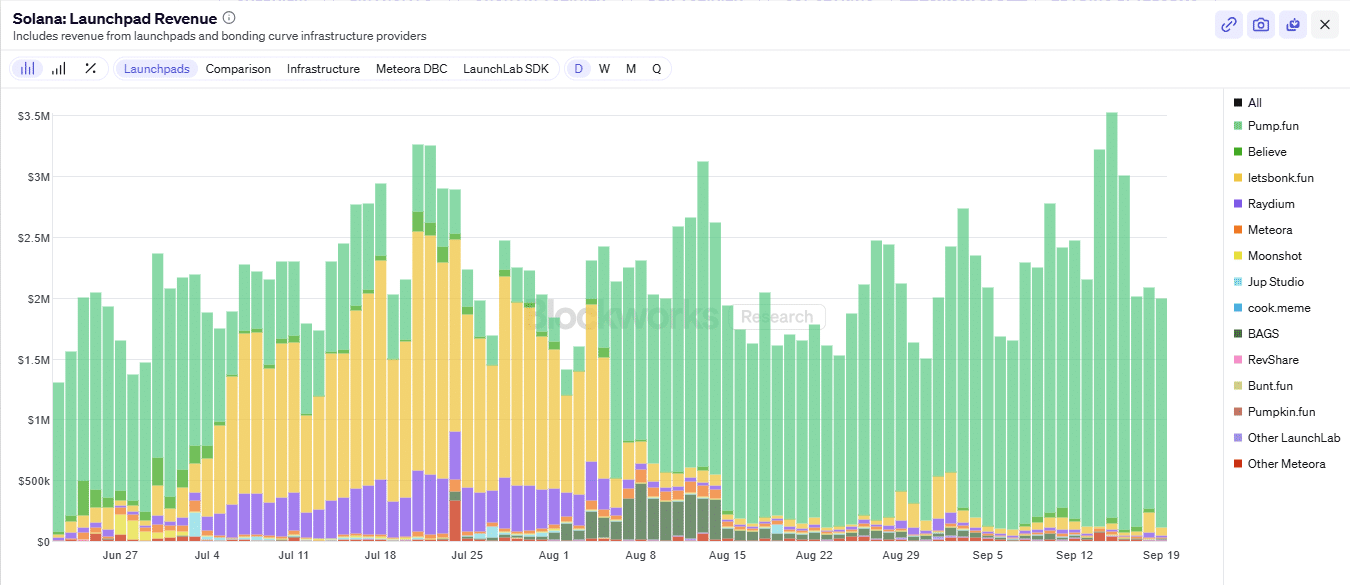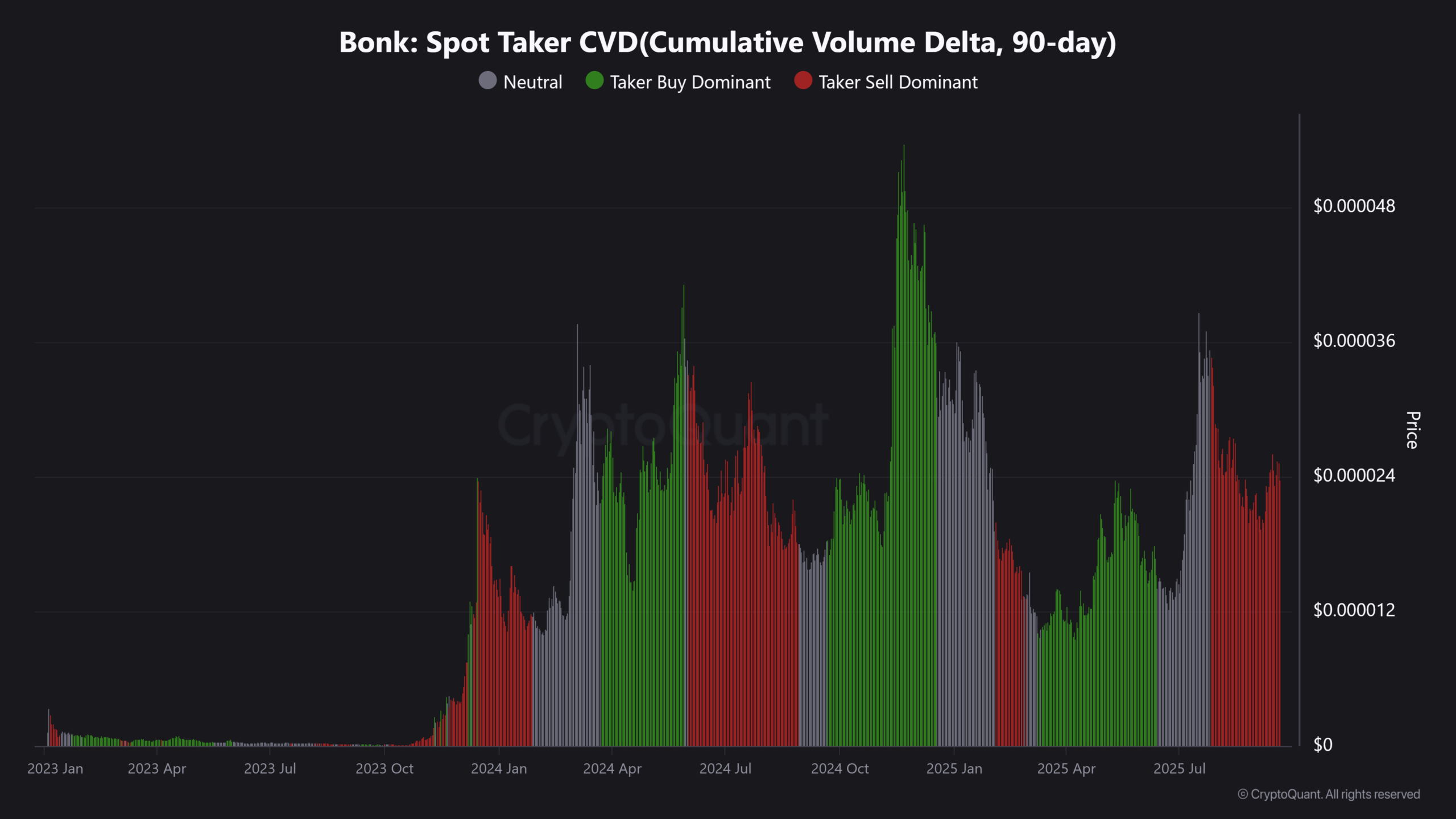BONK’s price is pressured by sustained spot selling despite rising on‑chain activity and shrinking supply; strong burn rates and near‑1M holders support long‑term upside, but renewed demand — not just volume — is needed to reverse short‑term bearish CVD signals.
-
Spot selling drove short‑term weakness
-
LetsBONKfun lifted on‑chain revenue and increased burn share to ~50%.
-
Nearly 1 million holders and $12.57M annual revenue underpin tokenomics.
BONK price analysis: BONK price remains under pressure despite strong on‑chain activity and burning; read the latest on tokenomics and trader flows.
What is causing BONK’s price weakness despite rising activity?
BONK price is weak because spot taker cumulative volume delta (CVD) shows net selling, while futures demand remains muted. Short‑term indicators (On‑Balance Volume, MACD) signal bearish momentum even as supply is reduced by higher burn rates.
How did LetsBONKfun affect BONK tokenomics?
LetsBONKfun, a Solana launchpad, increased fee generation and routed a larger revenue share to burning. DefiLlama data showed the platform’s burn allocation rose from ~35% to ~50%, while LetsBONKfun collected $20.9M in fees and generated $12.57M in revenue annually, tightening circulating supply.
What on‑chain indicators show demand vs. supply dynamics?
Spot Taker CVD data from CryptoQuant indicates cumulative net selling on the spot market; this contrasts with neutral Futures Taker CVD, which implies weak derivatives-driven leverage. At the same time, burn mechanics and launchpad revenue are steadily reducing supply.
Chain analytics services reported BONK as one of the most accumulated tokens by smart money in a 24‑hour window, with roughly $250,000 inflows. Nearly 1 million wallets hold BONK, a signal of broad distribution that may support price if buying resumes.
Source: Blockworks
DefiLlama confirmed the platform increased burn allocation. LetsBONKfun’s position in the launchpad market was estimated near 25% share versus leaders holding larger shares. Those shifts have measurable tokenomic impact but have not yet translated into sustained price gains.


Why did on‑chain strength not translate into price gains?
Short answer: selling pressure on spot markets outpaced the incremental demand generated by launchpad activity. Technical indicators show bearish momentum in the near term, and without a fresh wave of buying, reduced supply alone may be insufficient to reverse price trends.
How should traders read the CVD and technical signals?
Read Spot Taker CVD to assess retail and spot-led flows; a sustained negative CVD typically precedes price weakness. Combine CVD with MACD and On‑Balance Volume for confirmation. Neutral Futures Taker CVD suggests limited leveraged buying to support a rally.

Source: TradingView

Source: CryptoQuant
Frequently Asked Questions
Is BONK’s supply actually decreasing?
Yes. LetsBONKfun’s revenue share to burning rose from roughly 35% to about 50%, and the platform collected $20.9M in fees, supporting a daily decline in circulating BONK supply.
How many holders does BONK have and why does it matter?
Nearly 1 million holders, which suggests broad distribution. Wide holder base can stabilize price over time if demand picks up because supply becomes more fragmented.
Key Takeaways
- Spot selling dominated: Net negative Spot Taker CVD drove short‑term price pressure.
- Tokenomics improved: LetsBONKfun raised burn allocation to ~50%, collecting $20.9M in fees and $12.57M revenue.
- Demand is decisive: Nearly 1M holders and reduced supply support upside, but a fresh buying wave is required to lift prices.
Conclusion
Rising on‑chain metrics and stronger burn mechanics have materially tightened BONK’s tokenomics, but short‑term price action is governed by spot market flows and technical momentum. Watch Spot Taker CVD, futures demand, and on‑chain revenue trends for the next clear signal; continued monitoring will reveal whether fundamentals translate into a sustainable rally.
